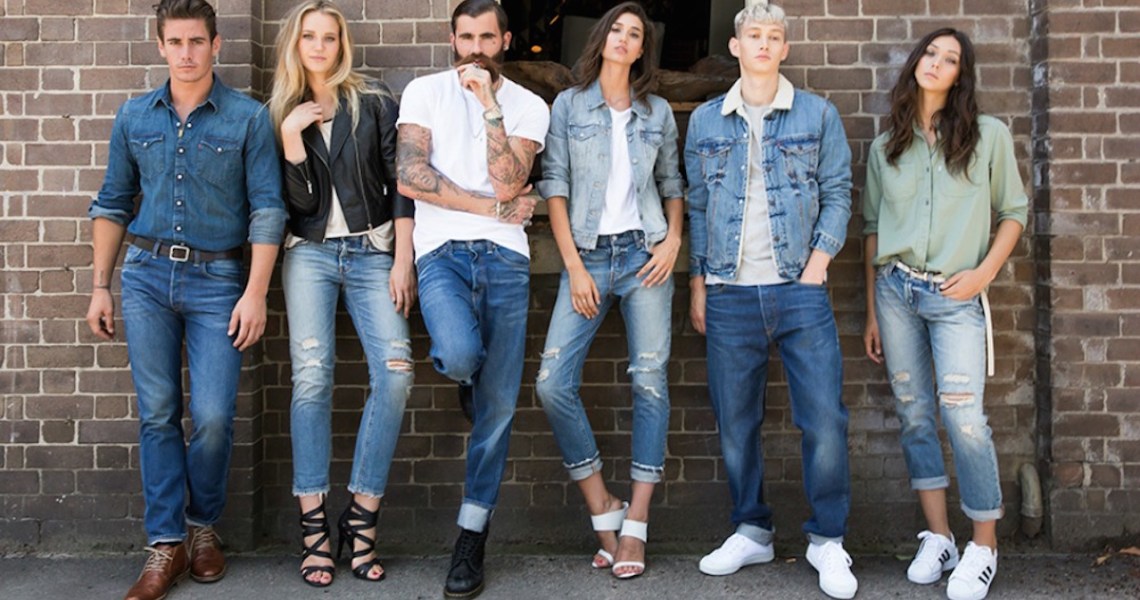In Levi’s third-quarter earnings reported on Tuesday, its second report since going public earlier this year, the company reported that while revenue in Europe and Asia has been strong, growing 14% and 9%, respectively, sales in North America fell by 3% year over year. As the number of denim brands grows while the denim market slowly recovers from some recent shrinkage, denim brands are becoming increasingly competitive for a more limited pool of revenue.
In the past year, Madewell, Levi’s and Kontoor Brands, the parent company of denim brands Rock & Republic, Wrangler and Lee, have all gone public or filed to do so, saturating the denim market with three large brands each fighting for both consumers and investors. On top of that, brands like American Eagle and Abercrombie & Fitch have both seen strong years for growth in the denim market, with American Eagle commanding the largest share of jeans sales among 15- to 25-year-olds. Joe’s Jeans and True Religion have both attempted comebacks and newer brands like Good American have made headway with consumers through focusing on inclusive sizing.
Altogether, this means that the denim market in the U.S. is more competitive than ever and brands need to do more to stand out. The U.S. is typically where Levi’s generates most of its revenue, so despite the growth in other markets, drooping sales in the U.S. hurt quite a bit.
Madewell is currently in the top position among U.S. denim brands, with $614 million in revenue in 2018, compared to $283 million from Levi’s. Currently in the process of splitting from J. Crew and undergoing an IPO, the company has continued to grow into other categories and through launching a men’s line. Notably, only 19% of Madewell’s revenue last year came from denim, with the rest coming from its combined other categories of apparel and accessories.
Simultaneously, the last few years have seen consumers moving away from denim. The overall market for jeans in the U.S. fell hard from nearly $19 billion in 2013 to barely over $16 billion in 2017. Instead, customers, fueled by the rise of streetwear, have embraced sweatpants, joggers and athletic leggings instead of jeans. But there is a silver lining. Euromonitor showed an upswing from 2017 to 2018, bringing U.S. denim up to closer to $17 billion. But as denim brands try to capitalize on the slow return of denim, they do so in a significantly crowded market.
Sales in the “sport leisure” category of fashion surged in the U.S. last year by 17% to $9.6 billion, according to NPD. The rise of athletic wear has not totally overtaken denim, but it has fueled a more competitive market.
“We’re still seeing retailers pushing denim online and in their social media content,” said Krista Corrigan, retail analyst at Edited. “Furthermore, denim was scattered across the men’s spring 2020 shows, highlighting colored denim, bleach effects and classic trucker jackets. This not only bodes well for the staying power of denim, but it also proves the consumer is still responding to the fabrication. While athleisure themes continue to rise and technical materials are soaring in popularity, there is still a customer that exists for both groups.”
Ad position: web_incontent_pos1
Some denim brands have adjusted to this shift by expanding their product range. True Religion was one such brand — known primarily for denim, it pivoted in May to a more streetwear-inspired product mix including other types of bottoms.
“It’s moved away from denim to sweatpants and joggers,” said Allen Onyia, recently appointed artistic director at True Religion, who spearheaded the company’s pivot to streetwear. When he was appointed in May, Onyia’s first priority was finding a way to add styles outside of jeans to its classic denim products.
“Like many trends, the demand for denim ebbs and flows over time, but there will always be a place for this classic look in the market,” Corrigan said. “Heritage brands in the space like Levi’s and Wrangler have been the face of the denim resurgence in the market, and it’s reflected in the retail industry, as well.”




